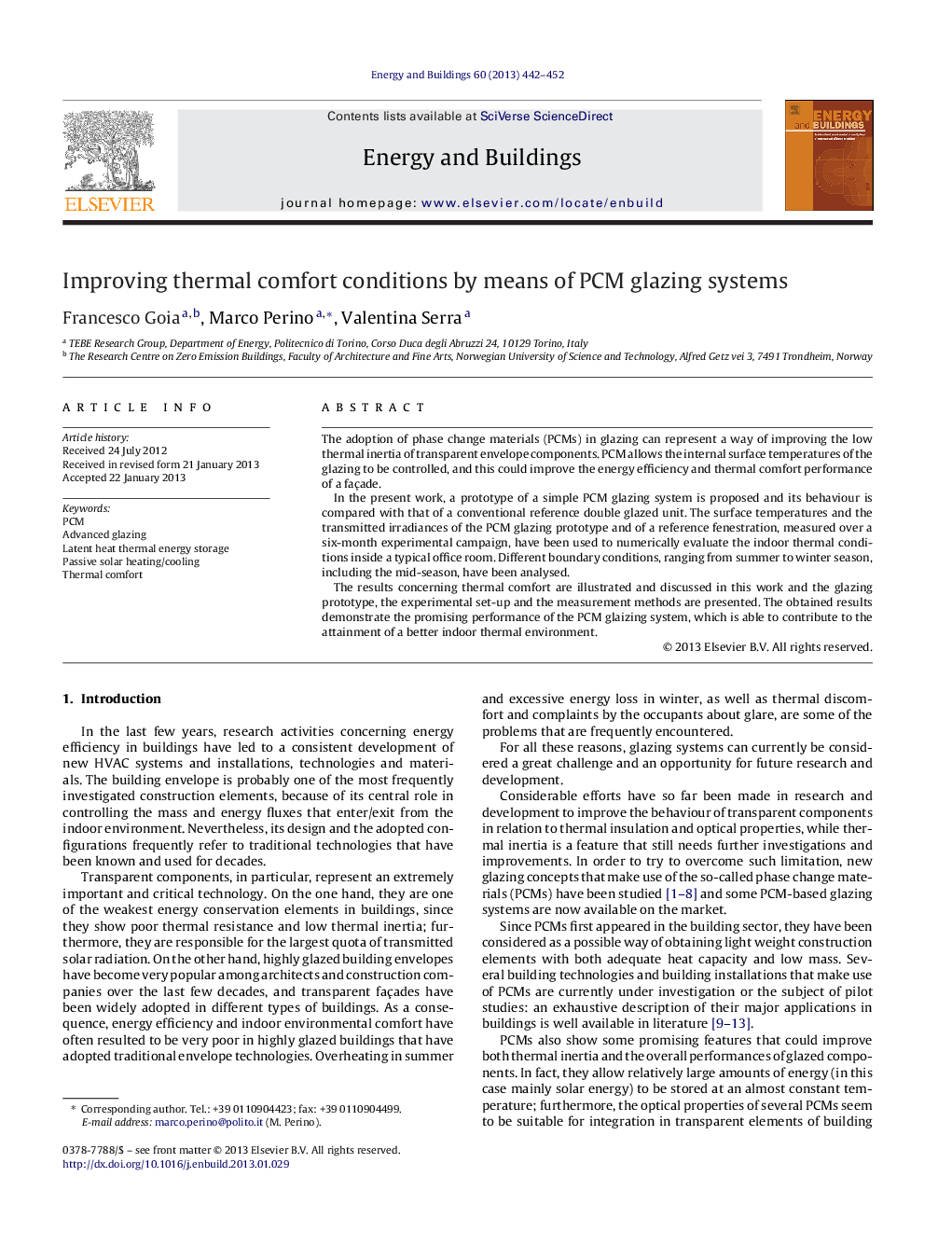| Article ID | Journal | Published Year | Pages | File Type |
|---|---|---|---|---|
| 263372 | Energy and Buildings | 2013 | 11 Pages |
The adoption of phase change materials (PCMs) in glazing can represent a way of improving the low thermal inertia of transparent envelope components. PCM allows the internal surface temperatures of the glazing to be controlled, and this could improve the energy efficiency and thermal comfort performance of a façade.In the present work, a prototype of a simple PCM glazing system is proposed and its behaviour is compared with that of a conventional reference double glazed unit. The surface temperatures and the transmitted irradiances of the PCM glazing prototype and of a reference fenestration, measured over a six-month experimental campaign, have been used to numerically evaluate the indoor thermal conditions inside a typical office room. Different boundary conditions, ranging from summer to winter season, including the mid-season, have been analysed.The results concerning thermal comfort are illustrated and discussed in this work and the glazing prototype, the experimental set-up and the measurement methods are presented. The obtained results demonstrate the promising performance of the PCM glaizing system, which is able to contribute to the attainment of a better indoor thermal environment.
► The influence of a PCM glazing system on the thermal comfort conditions is evaluated. ► Based on experimental data, PMV and PMV* are calculated for different boundary conditions. ► PCM glazing in general provides good performance. ► The higher the outdoor solar irradiation, the greater the benefits provided by this system. ► Risk of overheating may occur during summer on clear sky days if the PCM transition temperature is not carefully optimized.
